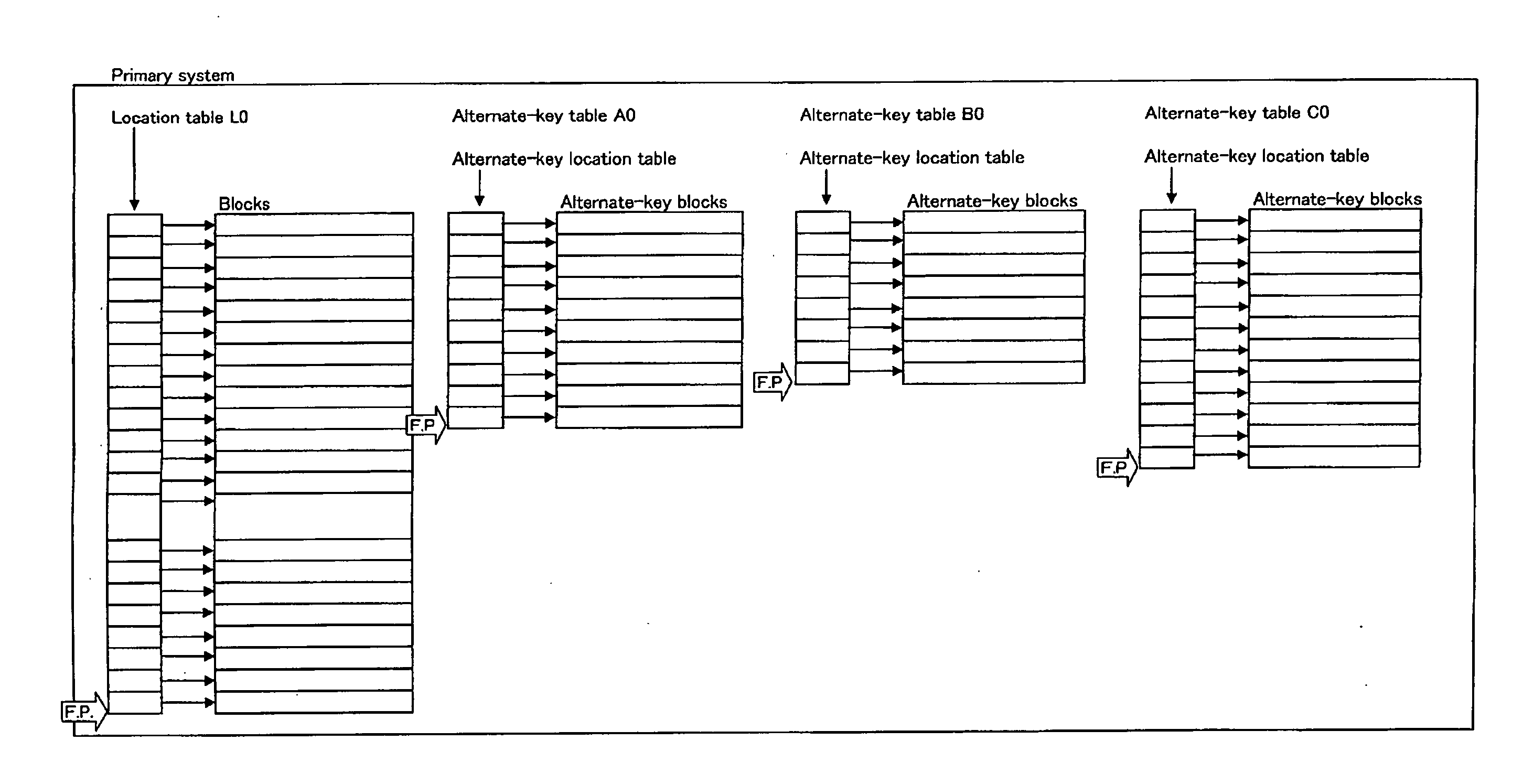Database accelerator
a technology of accelerator and database, applied in relational databases, data processing applications, instruments, etc., can solve the problems of inability to achieve greater processing performance, lack of scalability, and upper limit of their performance, and achieve the effect of distributing the load on the database and low cos
- Summary
- Abstract
- Description
- Claims
- Application Information
AI Technical Summary
Benefits of technology
Problems solved by technology
Method used
Image
Examples
Embodiment Construction
[0084] The present invention is based on the concepts of the Data Storage and Retrieval System (Japanese Patent 3345628, U.S. Pat. No. 6,415,375 and U.S. Pat. No. 6,584,555) and has the objective of achieving scalability while using the basic elements thereof unmodified.
[0085] As a method of achieving scalability, the present invention deploys multiple location tables and alternate-key location tables of the inventions of the Data Storage and Retrieval System and the Database Reorganization System, and implements considerable increases in the overall processing volume by dispersing the load of binary searches performed on those.
[0086] A set of a location table and its blocks and alternate-key tables (one alternate-key location table and its alternate-key blocks for each alternate key) is termed a primary system. FIG. 1 is an example of a primary system. Three type alternate keys have been created here.
[0087] An accelerator or an accelerator system containing a location table and ...
PUM
 Login to View More
Login to View More Abstract
Description
Claims
Application Information
 Login to View More
Login to View More - R&D
- Intellectual Property
- Life Sciences
- Materials
- Tech Scout
- Unparalleled Data Quality
- Higher Quality Content
- 60% Fewer Hallucinations
Browse by: Latest US Patents, China's latest patents, Technical Efficacy Thesaurus, Application Domain, Technology Topic, Popular Technical Reports.
© 2025 PatSnap. All rights reserved.Legal|Privacy policy|Modern Slavery Act Transparency Statement|Sitemap|About US| Contact US: help@patsnap.com



